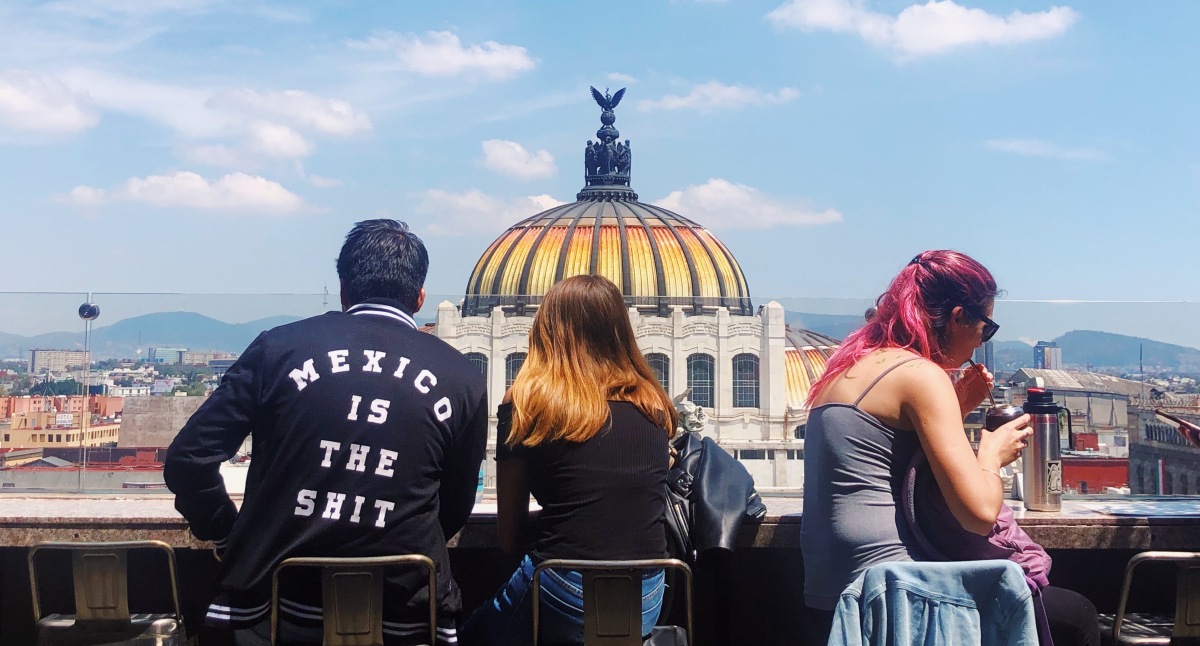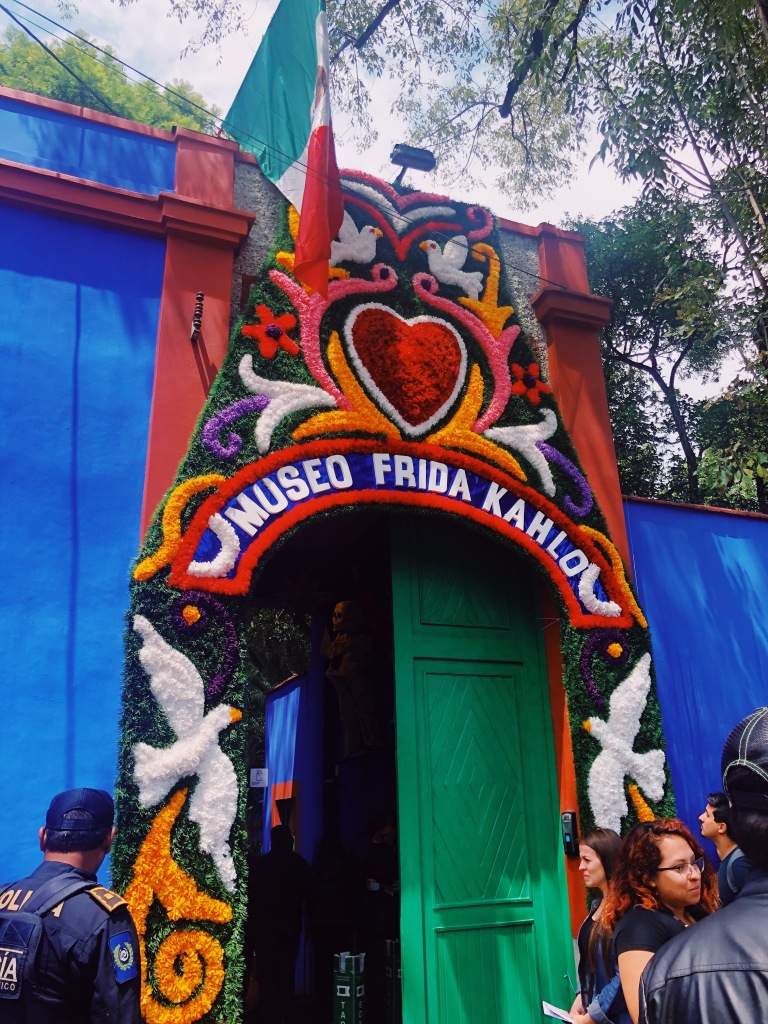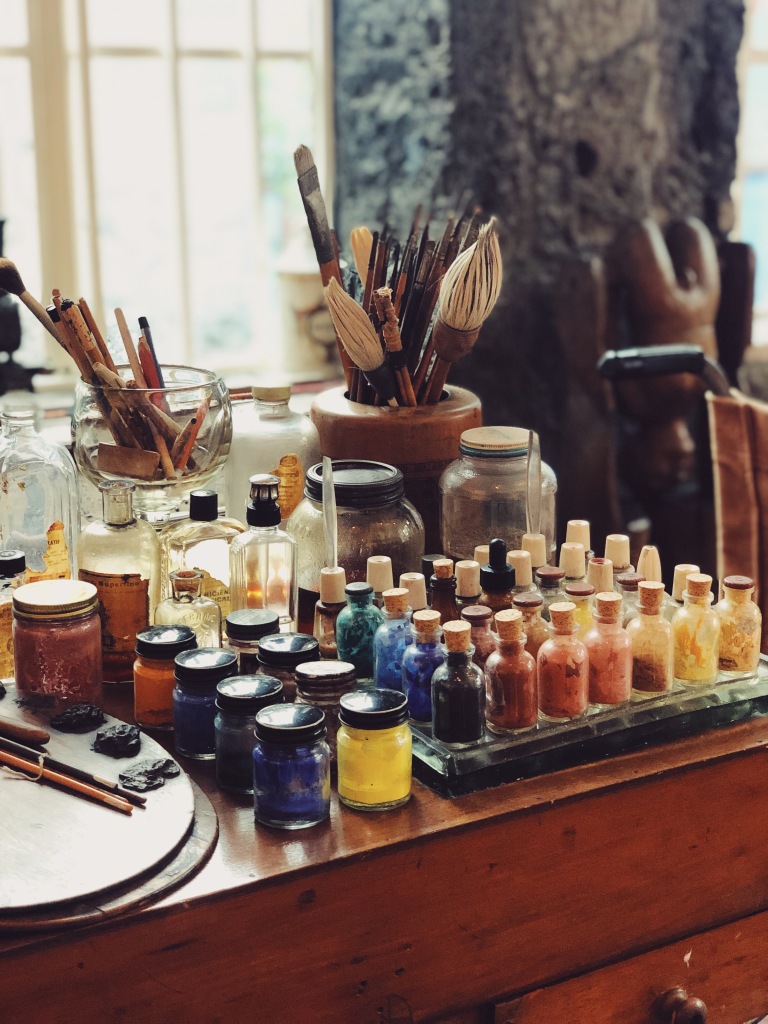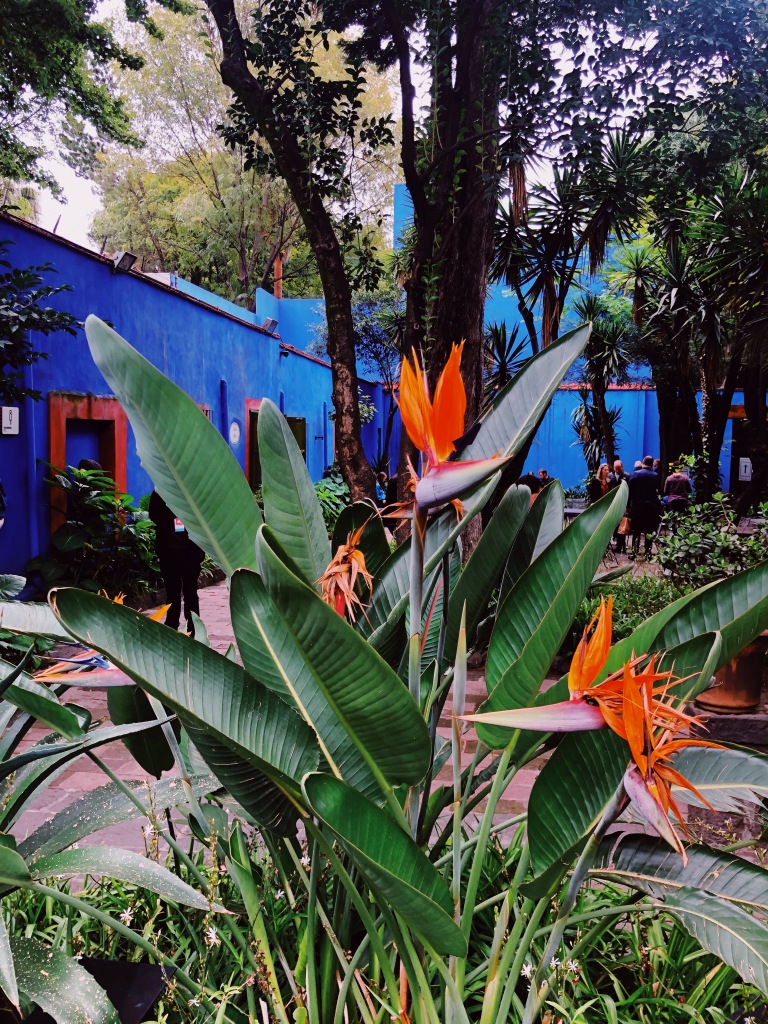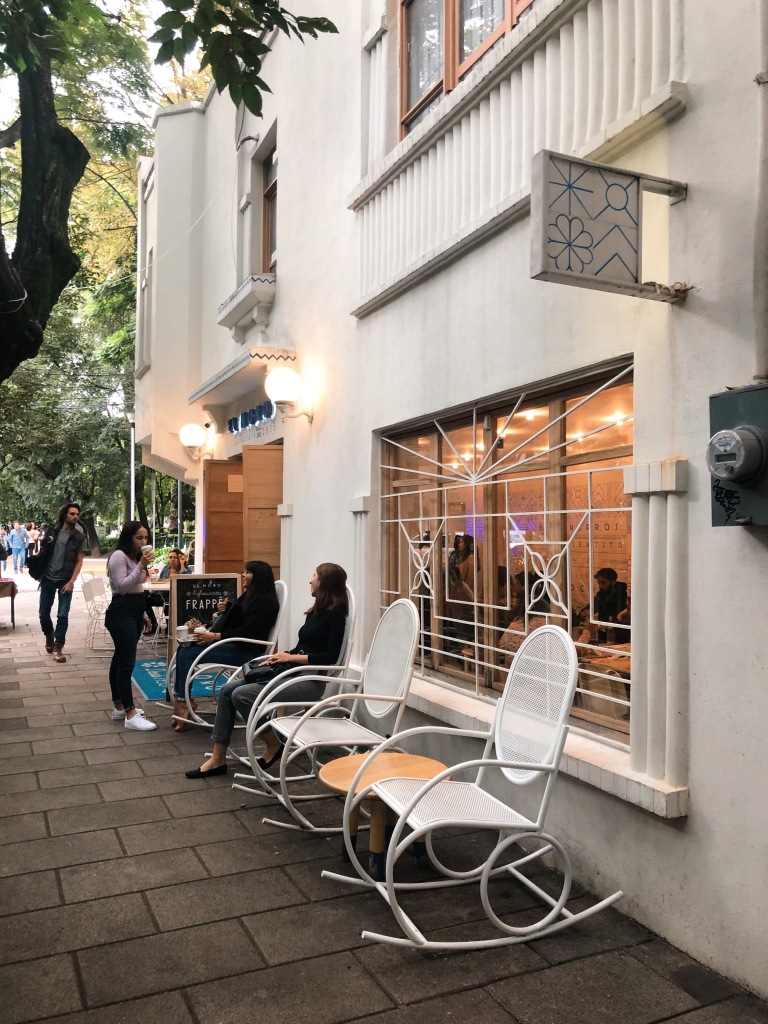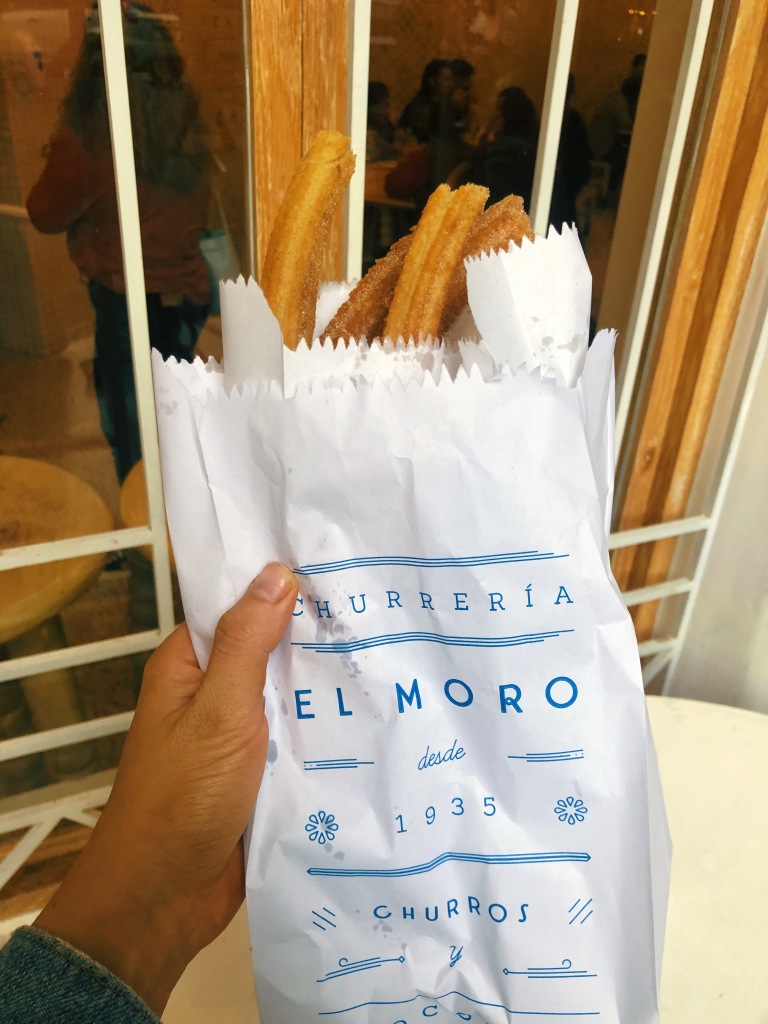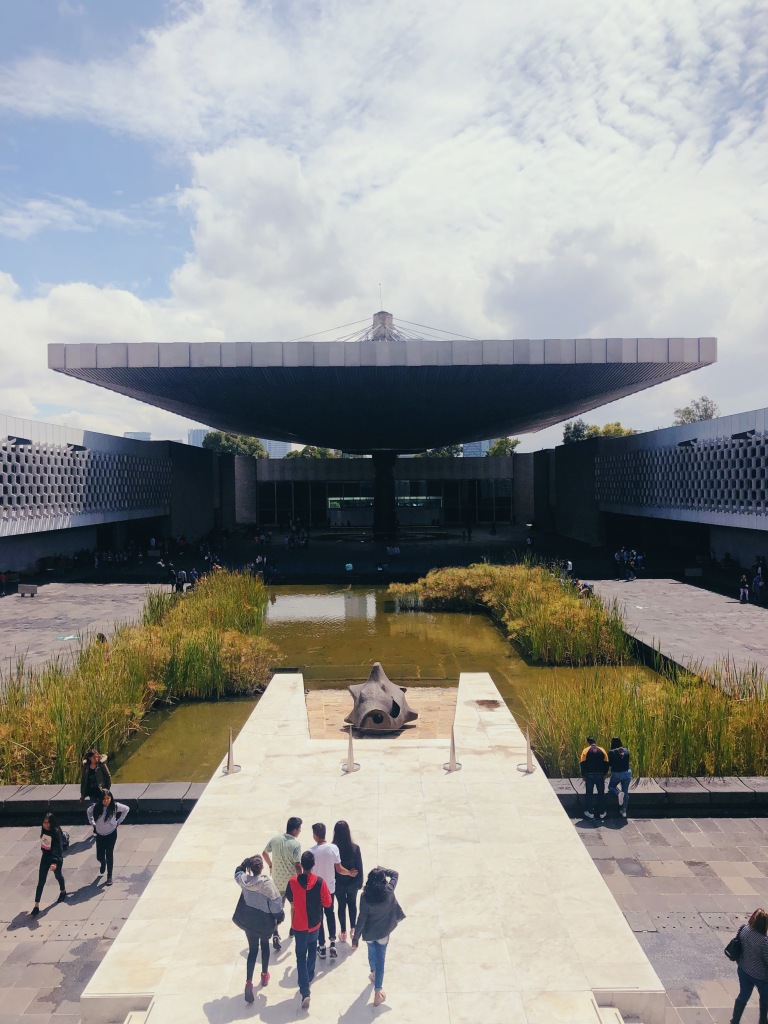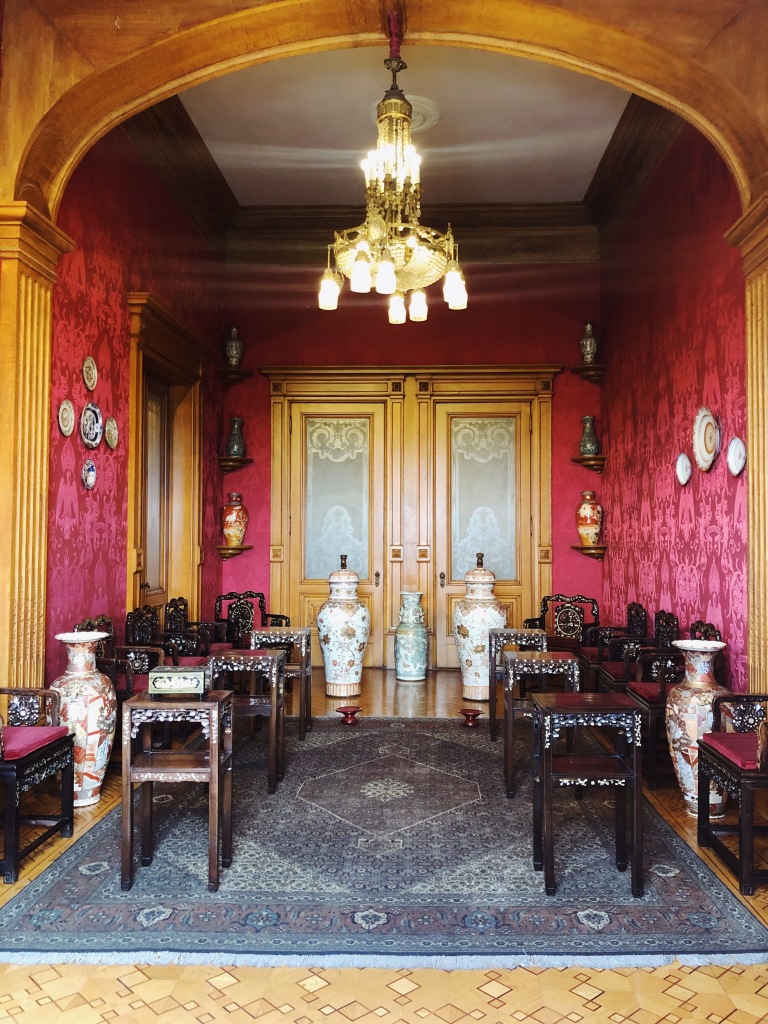I’m trying to make traveling on my birthday something of a tradition, following last year’s adventure to Bali. This year, I convinced a dear friend of mine who was also turning 26 this September to turn an occasion we were both lightly dreading into something celebratory. She’s based in New York, so I figured a perfect halfway point for us would be Mexico City (don’t question the geography too much.)
Mexico City has skyrocketed in popularity in recent years as a destination for world-class art, food and culture. I’d heard nothing but rave reviews from friends and coworkers who had been, and a short flight and an abundance of cheap, chic accommodations made it a no-brainer.
Upon telling anyone we were visiting Mexico City, we were completely inundated with recommendations for museums, restaurants, taco stands, markets and more. People have strong opinions about Mexico City, believe me. With a tight five days to pack everything in, we had to prioritize. That meant first thing first on our list was the Frida Kahlo Museum.
Before my visit, I’ll admit my knowledge of Frida Kahlo was confined to the top-line notes I was taught in art class, the bits and pieces I’ve learned as she’s been adopted as a feminist folk hero in recent years. The museum’s bright blue exterior has made it Instagram famous, too, drawing long of tourists, so you’ll want to buy your tickets online in advance. Once you arrive, you’ll also want to opt for the audio guide and the sticker that allows you to take photos inside the exhibits (I skipped this the first time through but was so enamored with the art that I went back through again after buying the pass.)
I’d heard complaints that the museum was overpriced, or overhyped, so my expectations were tempered at first – and then completely and utterly blown away. The museum is located in Coyoacán in south Mexico City, and the property is where Frida Kahlo was born, grew up, lived with her husband Diego Rivera, and, later, where she died. The grounds are eye poppingly lush, with emerald and orange birds of paradise, brightly colored pieces of Frida’s folk art, and, of course, the signature cobalt blue walls, which are so incredibly vivid that my iPhone had trouble capturing it.

The museum itself traces Frida’s life and career as an artist, from her training by her photographer father and bout of polio as a child that left her with one leg short than the other, to her tumultuous marriage(s) with Diego Rivera and the bus accident that left her unable to have the children she desperately wanted. In addition to photographs and portraits of Frida by the artist and her lovers, the museum showcases her most intimate journals and sketches, dioramas, furniture, iconic clothing and jewelry.
I found myself leaving in awe of Frida Kahlo’s innate talent, her strength in the fact of heartache and unimaginable physical pain, and her sheer will to survive.

This was somehow the smallest pyramid! 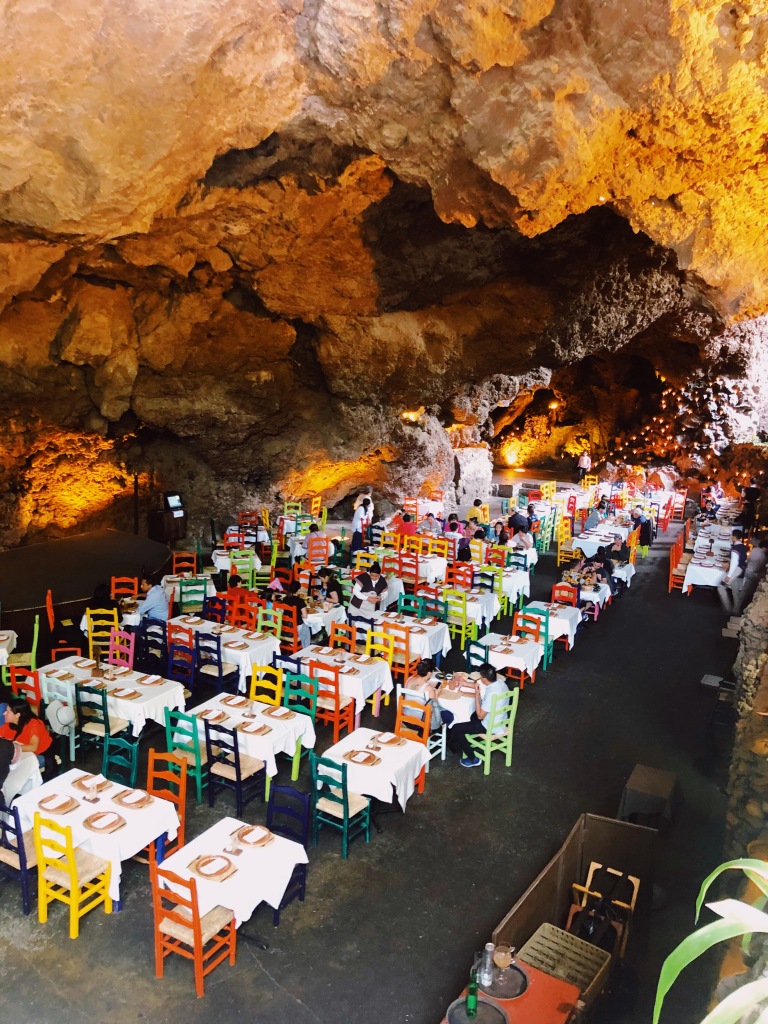
La Gruta 
Grasshoppers!
Next up were the famed Teotihuacan pyramids, located about an hour outside of Mexico City in what was once a thriving Mesoamerican civilization. We Ubered (a whole 40 minute drive for about $4) to the Terminal Autobuses del Norte, and from there paid $6 or so for roundtrip fare to and from the pyramids – definitely the easiest and cheapest way to go. The bus ride takes about an hour, give or take traffic and pit stops to pick up food vendors and musicians (we got multiple mobile concerts for just a few pesos.)
Once you arrive, skip past the people hawking guided tours and strap on your walking shoes – seriously, there is a LOT of walking involved here – and head for The Ciudadela, which leads to the Temple of the Feathered Serpent Quetzalcoatl. Allow yourself plenty of time for Teotihuacan: the Avenue of the Dead, which runs the length of the Ciudadela, the Pyramid of the Sun and the Pyramid of the Moon, is about four kilometers long. The Pyramid of the Sun is a staggering 248 steps tall, and one of the largest pyramids in the western hemisphere. It also gets hot out on the Avenue of the Dead – there’s almost no shade – so bring plenty of water and cash to buy more.
I’ll be honest, we opted not to climb either of the taller pyramids, and I have zero regrets about it. I’m normally a pretty physically active traveler, but heat fatigue/dehydration is something I try not to tempt when I’m far from home. Instead, we made a reservation at La Gruta, a touristy but still jaw-dropping restaurant nestled inside a cave older than Christ (you don’t get to say that about most dining establishments!)
It’s super cute and colorful and I’ll be honest, the atmosphere is what you’re paying for. The food was decent, but pricey, and a healthier spin on traditional Mexican food. My friend and I, in a spurt of bravado, also decided to try tostadas with chapulines – yup, those would be grasshoppers! Since they’re a delicacy in Mexico, we expected them to be treated like a garnish, a light sprinkling on our guacamole-smothered tostadas. This was, however, absolutely not the case. Our tostadas were completely covered with chapulines – I’d estimated about a hundred in total – and it was quite the experience. I truly didn’t mind the taste, they’re most salty and tangy and crunchy, but the visual (I’ll spare you the details of what happens when you try to cut a grasshopper with a fork and knife) was definitely off-putting to the point that we eventually asked the waiter to take the dish away. But hey, we tried!
Okay, now onto much more palatable things. Mexico City is known for its tacos, mezcal, and churros, among other things. On any given day you can enjoy the best fish taco of your life for next to nothing from a street vendor, to a 5-star meal that takes three hours, several hundred dollars, and reservations months in advance at the famed Pujol. I loved the cocktails and food (though did have a strangely hard time finding pescatarian and vegetarian options, despite an extensive list of culinary recommendations,) but easily my favorite part of Mexico City’s food scene are the cafes. Each one is unique and idiosyncratic, usually a hole-in-the-wall establishment with bar seating only, the cafes offer strong coffee and to-die-for pastries (my friend made us revisit the same cafe, Panaderia Rosetta, multiple times for the pan dulce.) They’re also usually open until 8 or 10 pm, which really enabled my penchant for drinking coffee at all times of the day or night.
A few absolute favorites: Panadería Rosetta in Roma Norte, Café Nin in Juarez, and Café Avellaneda in Coyoacán. Oh, and you must try breakfast at Lalo and the churros at El Moro. La Nacional is also a stylish and cozy little spot for dinner and some of the best mezcal cocktails in town.
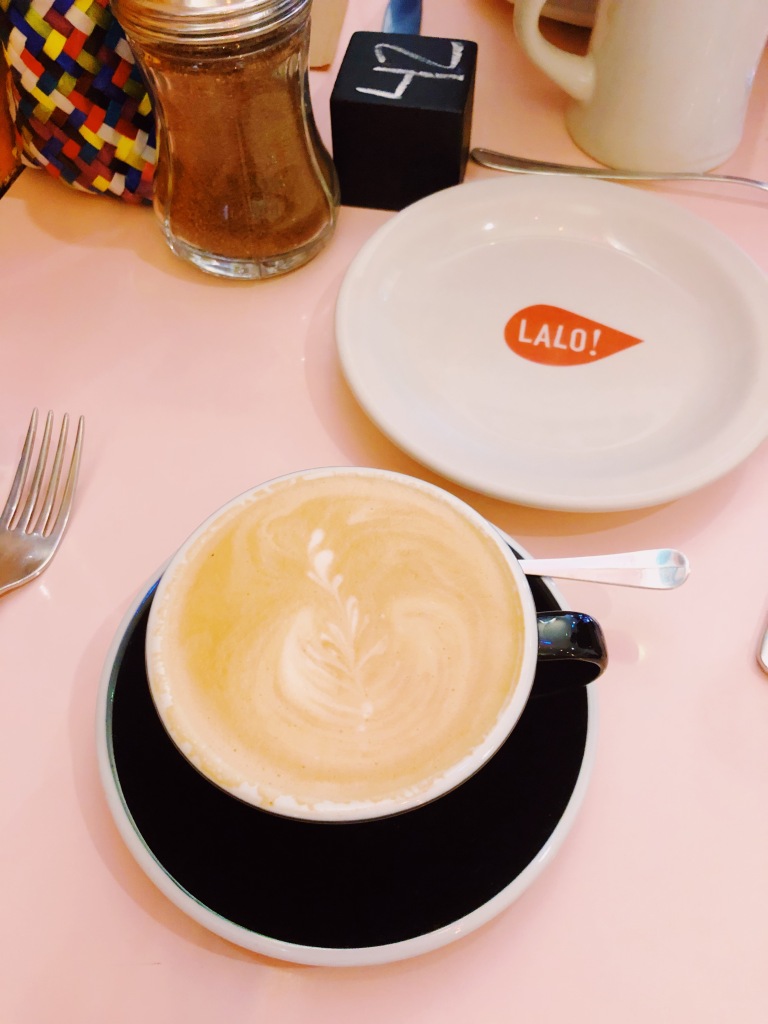
Lalo 

Roma Norte 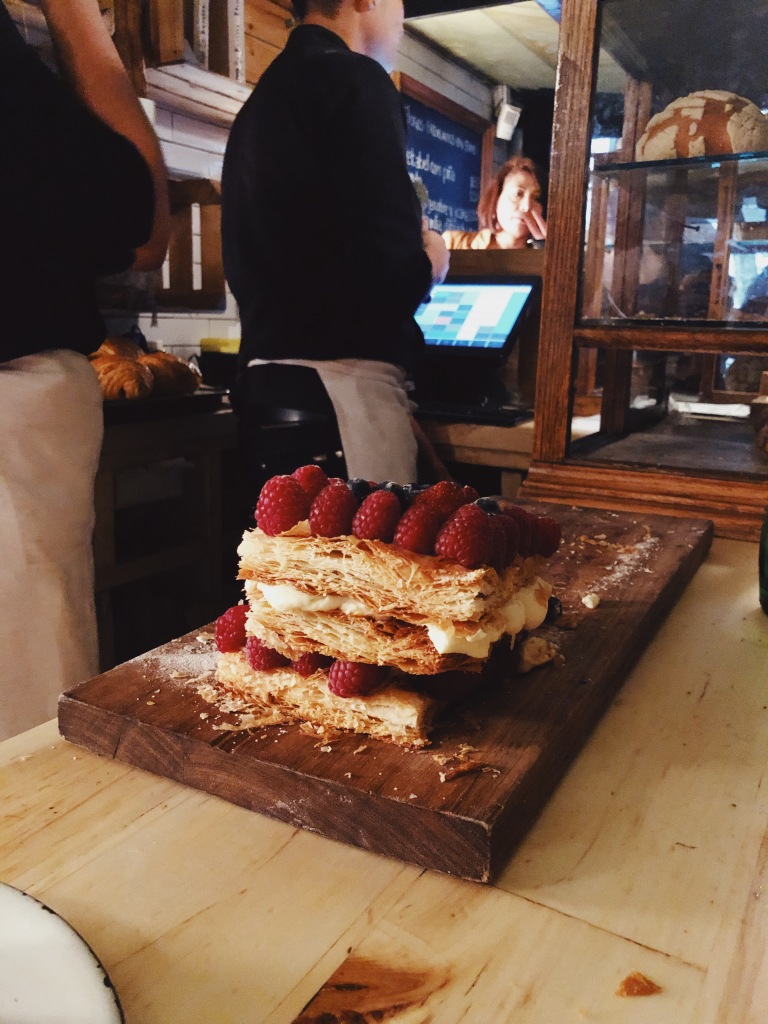
Panaderia Rosetta 
La Nacional
Mexico City is an absolute book-lovers’ paradise. There are quirky little bookstores on virtually every street corner, and Cafebrería El Péndulo, which is part-bookstore, part-cafe with multiple locations through the city, will make your jaw drop. Most of the books are in Spanish, but each location has an English section as well – and you could always pick up a kids book to start learning Spanish, too!
After visiting the La Ciudadela market in Centro to load up on souvenirs, walk over to the Biblioteca de México José Vasconcelos to experience the most stunning public library you’ve almost certainly ever seen. It’s a massive, completely free space that I would work and write from in a heartbeat, and it’s houses five luscious rooms filled with the private libraries of great Mexican writers and thinkers. We unfortunately visited near closing time, and I’m dying to go back and spend a day reading, writing and wandering here.

This is a public library! 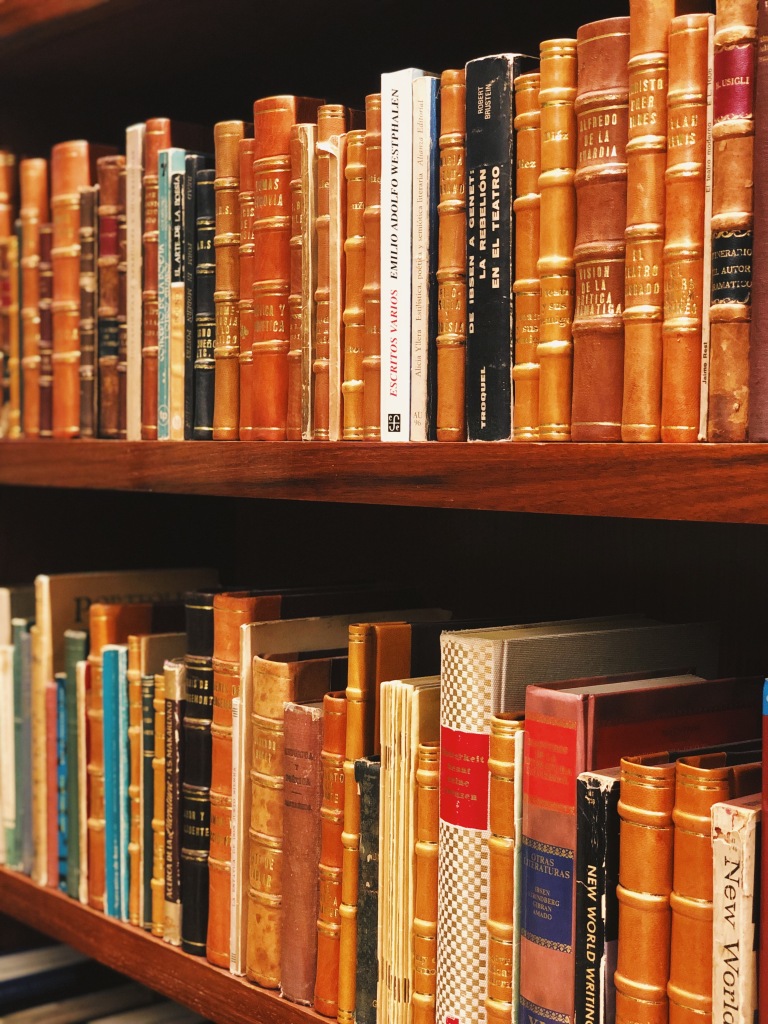

Pendulo
If museums are your thing, Mexico City has got that covered, too. The Museum of Anthropology is the largest museum in Mexico, spanning virtually the entirety of human existence in the country and documenting the history of Mexico’s seemingly infinite civilizations and ethnic groups, from the Aztecs to the Maya and the people of Oaxaca. The museum is overwhelmingly comprehensive, but easily my favorite part was all the incredible craftsmanship on display: pottery, paintings, intricate beading, woven rugs and baskets and blankets, intricate headdresses, jewelry made from gold and turquoise, seashells and coral, and so much more. It’s also home to the massive Aztec “Sun stone” – which, contrary to popular belief is not the Aztec calendar, but likely a platform once used for ritual sacrifice.
Also within the Bosque de Chapultepec, a massive forest that is twice the size of Central Park, is the Chapultepec Castle. Tucked away at the very top of the park, the castle has incredible, panoramic views of Mexico City, and costs less than $10 to enter. Construction began on the castle around 1785 as a summer home for a Spanish military leader, and was completed nearly a century later as a residence for Emperor Maximilan I and Empress Carlota. Since then, it’s housed most Mexican presidents, and was turned into a museum in 1939.
The style is neo-gothic, with winding staircases, checkerboard floors, opulent chandeliers, turrets, a gold-filigreed carriage and stunning stained glass windows. The grounds are massive and immaculate, and, fun fact, the castle was a filming location for the Leo DiCaprio and Claire Danes version of Romeo + Juliet! I definitely felt like a princess here.
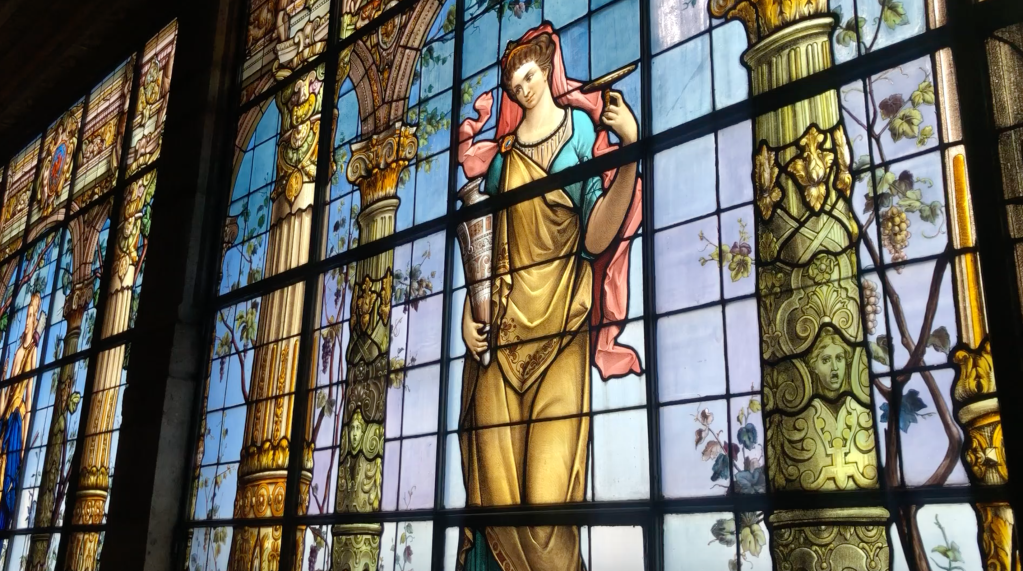
Even though I know I could spend months in Mexico City and still not see everything, it captured my heart in such a short amount of time. The food, coffee, literature, art, museums … there’s never a dull moment, eye-popping color around every corner, folklorico dancing and music floating out down every street. And the people, the people, were so friendly, welcoming and warm. I didn’t feel like a tourist or a stranger, I felt like a newcomer in one of the world’s most fascinating cities, and I can’t wait to return.

